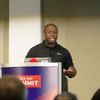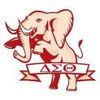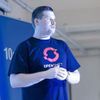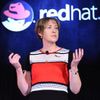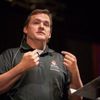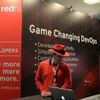Tracks
Tuesday, 2nd May
Room 205A
Tuesday, 2nd May, 18:00 - 21:00
- Evening event
Room 210A
Tuesday, 2nd May, 18:00 - 21:00
- Evening event
- Mauricio Leal (LATAM Developer Experience Expert Red Hat), Vagner Farias (Cloud and Virtualization SME Red Hat)
- 45 minutes session
LATAM Developer Experience Expert Red Hat
Cloud and Virtualization SME Red Hat
Room 157C
Tuesday, 2nd May, 10:15 - 11:00
- Breakout session
- Matthias Krohnen (Manager IT, Lead Innovation Lab Miles & More GmbH), Torben Jaeger (Middleware Specialist Solution Architect Red Hat)
- 45 minutes session
Manager IT, Lead Innovation Lab Miles & More GmbH
Middleware Specialist Solution Architect Red Hat
Room 153B
Tuesday, 2nd May, 10:15 - 11:00
- Breakout session
![]()
![]()
- Prakash Aradhya ( Red Hat), Ryuji Kurokawa (COO iSmart Technologies Corporation), Tetsuya Kimura (CEO iSmart Technologies Corporation)
- 45 minutes session
Red Hat
COO iSmart Technologies Corporation
CEO iSmart Technologies Corporation
Room 153C
Tuesday, 2nd May, 10:15 - 11:00
- Breakout session
- Kyle Bader (Sr. Solution Architect Red Hat), Sean Cohen (Associate Manager, Product Management Red Hat)
- 45 minutes session
Sr. Solution Architect Red Hat
Associate Manager, Product Management Red Hat
Room 154
Tuesday, 2nd May, 11:30 - 12:15
- Breakout session
Senior Software Engineer Red Hat
Room 151A
Tuesday, 2nd May, 11:30 - 12:15
- Breakout session
- Rebecca Fernandez (Principal Employment Branding + Communications Specialist Red Hat), Jennifer Krieger (Chief Agile Architect Red Hat)
- 45 minutes session
Principal Employment Branding + Communications Specialist Red Hat
Chief Agile Architect Red Hat
Room 156C
Tuesday, 2nd May, 11:30 - 12:15
- Breakout session
- Jens Eckert (Project Lead Platform as a Service BMW AG)
- 45 minutes session
Project Lead Platform as a Service BMW AG
Room 153B
Tuesday, 2nd May, 11:30 - 12:15
- Breakout session
- Michael Cirioli (Solutions Architect Red Hat)
- 45 minutes session
Solutions Architect Red Hat
Room 151B
Tuesday, 2nd May, 11:30 - 12:15
- Breakout session
- Dustin Black (Senior Architect, Software-Defined Storage Red Hat)
- 45 minutes session
Senior Architect, Software-Defined Storage Red Hat
Room 157A
Tuesday, 2nd May, 11:30 - 12:15
- Breakout session
- Claus Ibsen (Senior Principal Software Engineer Red Hat)
- 45 minutes session
Senior Principal Software Engineer Red Hat
Room 102B
Tuesday, 2nd May, 11:30 - 12:15
- Breakout session
- Bill Gray (RHEL Performance Team Engineer Red Hat)
- 2 hour session
RHEL Performance Team Engineer Red Hat
Room 104AB
Tuesday, 2nd May, 15:30 - 17:30
- Breakout session
- Geoffrey De Smet (Senior Software Engineer / OptaPlanner lead Red Hat), Duncan Doyle (Technical Marketing Manager Red Hat)
- 45 minutes session
Senior Software Engineer / OptaPlanner lead Red Hat
Technical Marketing Manager Red Hat
Room 153A
Tuesday, 2nd May, 15:30 - 16:15
- Breakout session
- Jonathan Gershater (Senior PMM Red Hat), Kevin Jones (Cloud Domain Architect Red Hat)
- 45 minutes session
Senior PMM Red Hat
Cloud Domain Architect Red Hat
Room 157B
Tuesday, 2nd May, 15:30 - 16:15
- Breakout session
- Rich Jerrido (Red Hat Satellite Technical Marketing Manager Red Hat), Will Darton (ISD Support Lead III Navy Federal Credit Union)
- 45 minutes session
Red Hat Satellite Technical Marketing Manager Red Hat
ISD Support Lead III Navy Federal Credit Union
Room 151B
Tuesday, 2nd May, 15:30 - 16:15
- Breakout session
- Davide Gandino (OTT and Cloud Processing & Delivery Manager Sky Television), Samuele Dell'Angelo (Solution Architect Red Hat)
- 45 minutes session
OTT and Cloud Processing & Delivery Manager Sky Television
Solution Architect Red Hat
Room 157A
Tuesday, 2nd May, 15:30 - 16:15
- Breakout session
- Graeme Colman (Principal Solution Architect Red Hat)
- 45 minutes session
Principal Solution Architect Red Hat
Room 157C
Tuesday, 2nd May, 15:30 - 16:15
- Breakout session
- Mike Barrett (OpenShift Product Manager Red Hat), Marc Curry (Principal Product Manager, OpenShift Red Hat)
- 45 minutes session
OpenShift Product Manager Red Hat
Principal Product Manager, OpenShift Red Hat
Room 153B
Tuesday, 2nd May, 15:30 - 16:15
- Breakout session
- Moran Goldboim (Sr Product Manager Red Hat), Yaniv Dary (Senior Technical Product Manager Red Hat)
- 45 minutes session
Sr Product Manager Red Hat
Senior Technical Product Manager Red Hat
Room 152
Tuesday, 2nd May, 15:30 - 16:15
- Breakout session
- Chad Darby (Principal Solutions Architect Red Hat)
- 45 minutes session
Principal Solutions Architect Red Hat
Room 153C
Tuesday, 2nd May, 16:30 - 17:15
- Breakout session
- Keith Basil (Principal Product Manager Red Hat), Nathan Kinder (Senior Manager, Software Engineering Red Hat)
- 45 minutes session
Principal Product Manager Red Hat
Senior Manager, Software Engineering Red Hat
Room 151A
Tuesday, 2nd May, 16:30 - 17:15
- Breakout session
- Boris Kurktchiev (Senior Solutions Engineer UNC), Stephen Braswell (Senior Solutions Engineer University of North Carolina at Chapel Hill)
- 45 minutes session
Senior Solutions Engineer UNC
Senior Solutions Engineer University of North Carolina at Chapel Hill
Room 104C
Tuesday, 2nd May, 16:30 - 17:15
- Breakout session
- Tom Corcoran (Specialist Solution Architect Red Hat), Maggie Hu (Sr. Middleware Specialist Solution Architect Red Hat)
- 45 minutes session
Specialist Solution Architect Red Hat
Sr. Middleware Specialist Solution Architect Red Hat
Room 157B
Tuesday, 2nd May, 16:30 - 17:15
- Breakout session
- Laurent Domb (Principal Cloud Solutions Architect Red Hat), Michael Dahlgren (Sr. Cloud Solution Architect Red Hat), Maxim Burgerhout (Senior Solution Architect Red Hat)
- 45 minutes session
Principal Cloud Solutions Architect Red Hat
Sr. Cloud Solution Architect Red Hat
Senior Solution Architect Red Hat
Room 157C
Tuesday, 2nd May, 16:30 - 17:15
- Breakout session
- David Ingham (Director, Software Engineering Red Hat)
- 45 minutes session
Director, Software Engineering Red Hat
Room 153A
Tuesday, 2nd May, 16:30 - 17:15
- Breakout session
- Keith Babo (Product Manager Red Hat), Hiram Chirino (FL Red Hat)
- 45 minutes session
Product Manager Red Hat
FL Red Hat
Room 151B
Tuesday, 2nd May, 16:30 - 17:15
- Breakout session
2013 Partner theater
Tuesday, 2nd May, 15:00 - 15:20
- Partner Theater Session
- DeLisa Alexander (Executive Vice President & Chief People Officer Red Hat), Anita Devadason (Partner Solutions Architect Red Hat), Robin Appia (President & CEO Educology Solutions, Inc.), Natalie Gregory (Vice President Carahsoft), Victoria Guido (Technical Manager Blackstone Technology Group)
- 1.5 hours session
Executive Vice President & Chief People Officer Red Hat
Partner Solutions Architect Red Hat
President & CEO Educology Solutions, Inc.
Vice President Carahsoft
Technical Manager Blackstone Technology Group
2013 Partner theater
Tuesday, 2nd May, 15:30 - 17:00
- Partner Theater Session
2013 Partner theater
Tuesday, 2nd May, 17:15 - 17:35
- Partner Theater Session
2013 Partner theater
Tuesday, 2nd May, 17:45 - 18:05
- Partner Theater Session
2013 Partner theater
Tuesday, 2nd May, 18:15 - 19:00
- Partner Theater Session
![]()
- John Archer (Senior Energy AppDev Solutions Architect Red Hat), Davianne Duarte (Solution Architect - Global HQ Intel Corporation), Dwayne Bradley (Technology Development Manager Duke Energy)
- 45 minutes session
Senior Energy AppDev Solutions Architect Red Hat
Solution Architect - Global HQ Intel Corporation
Technology Development Manager Duke Energy
Room 156AB
Tuesday, 2nd May, 16:30 - 17:15
- Panel
- Tom Corcoran (Specialist Solution Architect Red Hat), Tom Coughlan (Sr. Sw. Eng. Mgr. Red Hat), Steven Carter (Chief Cloud Architect Red Hat)
- 45 minutes session
Specialist Solution Architect Red Hat
Sr. Sw. Eng. Mgr. Red Hat
Chief Cloud Architect Red Hat
Room 101
Tuesday, 2nd May, 10:15 - 11:00
- Lightning talk
- Asmita Jagtap (Senior Principal Software Engineer Veritas), Mukesh Bafna (Sr. Princ. Software Engineer Veritas), Abhijit Dey (Sr Dir, Development Veritas Pvt Ltd), Brent Compton (Director, Storage Solution Architectures Red Hat)
- 45 minutes session
Senior Principal Software Engineer Veritas
Sr. Princ. Software Engineer Veritas
Sr Dir, Development Veritas Pvt Ltd
Director, Storage Solution Architectures Red Hat
Room 101
Tuesday, 2nd May, 15:30 - 16:15
- Lightning talk
![]()
- Wayne Dovey (Senior Platform Consultant Red Hat), Ken Finnigan ( Red Hat)
- 45 minutes session
Senior Platform Consultant Red Hat
Red Hat
Room 101
Tuesday, 2nd May, 16:30 - 17:15
- Lightning talk
![]()
![]()
- Bill Helgeson (Principle Domain Architect Red Hat), Lan Chen (Territory Service Manager Red Hat)
- 45 minutes session
Principle Domain Architect Red Hat
Territory Service Manager Red Hat
2013 Services showcase
Tuesday, 2nd May, 11:30 - 12:15
- Consulting discovery session
- David Bush (Senior Consultant Red Hat)
- 45 minutes session
Senior Consultant Red Hat
2013 Services showcase
Tuesday, 2nd May, 15:30 - 16:15
- Consulting discovery session
- Greg DeKoenigsberg (Director, Ansible Community Red Hat), Robyn Bergeron (Ansible Community Architect Red Hat)
- 45 minutes session
Director, Ansible Community Red Hat
Ansible Community Architect Red Hat
Room 155
Tuesday, 2nd May, 10:15 - 11:00
- Birds of a feather
- Linda Knippers (Distinguished Technologist Hewlett Packard Enterprise)
- 45 minutes session
Distinguished Technologist Hewlett Packard Enterprise
Room 158
Tuesday, 2nd May, 10:15 - 11:00
- Birds of a feather
- William Henry (Senior Consulting Engineer Red Hat)
- 45 minutes session
Senior Consulting Engineer Red Hat
Room 158
Tuesday, 2nd May, 11:30 - 12:15
- Birds of a feather
![]()
- Annagreth Flierl Williams (EMEA Manager, Strategic Customer Engagement Red Hat)
- 45 minutes session
EMEA Manager, Strategic Customer Engagement Red Hat
Room 155
Tuesday, 2nd May, 15:30 - 16:15
- Birds of a feather
- Daniel Jeffries (Senior Solutions Architect Red Hat), Carlos Costa (Research Staff Member IBM)
- 45 minutes session
Senior Solutions Architect Red Hat
Research Staff Member IBM
Room 158
Tuesday, 2nd May, 15:30 - 16:15
- Birds of a feather
- Russ Doty (Product Manager Red Hat)
- 45 minutes session
Product Manager Red Hat
Room 155
Tuesday, 2nd May, 16:30 - 17:15
- Birds of a feather
- Chuck Gilbert (Technical Director and Chief Architect Penn State University - Institute for CyberScience)
- 45 minutes session
Technical Director and Chief Architect Penn State University - Institute for CyberScience
Room 158
Tuesday, 2nd May, 16:30 - 17:15
- Birds of a feather
Principal Product Marketing Manager Red Hat
Room 251
Tuesday, 2nd May, 10:15 - 12:15
- Instructor-led lab
- Bryan Kearney (Director, Software Engineering Red Hat)
- 2 hour session
Director, Software Engineering Red Hat
Room 254A
Tuesday, 2nd May, 10:15 - 12:15
- Instructor-led lab
- Jamie Duncan (Cloud Architect Red Hat), Billy Holmes (Sr Solutions Architect Red Hat)
- 2 hour session
Cloud Architect Red Hat
Sr Solutions Architect Red Hat
Room 254B
Tuesday, 2nd May, 10:15 - 12:15
- Instructor-led lab
- Andrew Block (Principal Consultant Red Hat)
- 2 hour session
Principal Consultant Red Hat
Room 254B
Tuesday, 2nd May, 13:00 - 15:00
- Instructor-led lab
- Scott Collier (Consulting Software Engineer Red Hat), Tommy Hughes (Principal Engineer Red Hat)
- 2 hour session
Consulting Software Engineer Red Hat
Principal Engineer Red Hat
Room 251
Tuesday, 2nd May, 13:00 - 15:00
- Instructor-led lab
- Sebastien Han (Principal Software Engineer, Storage Architect Red Hat), Gregory Charot (Senior Field Product Manager - OpenStack Red Hat)
- 2 hour session
Principal Software Engineer, Storage Architect Red Hat
Senior Field Product Manager - OpenStack Red Hat
Room 254A
Tuesday, 2nd May, 13:00 - 15:00
- Instructor-led lab
- Marek Jelen (Developer Advocate Red Hat), Charlotte Ellet
- 2 hour session
Developer Advocate Red Hat
Room 252B
Tuesday, 2nd May, 13:00 - 15:00
- Instructor-led lab
- Erik Jacobs (Principal Product Marketing Manager Red Hat)
- 2 hour session
Principal Product Marketing Manager Red Hat
Room 251
Tuesday, 2nd May, 15:30 - 17:30
- Instructor-led lab
- Thomas Gamull (Solutions Architect Red Hat)
- 2 hour session
Solutions Architect Red Hat
Room 254A
Tuesday, 2nd May, 15:30 - 17:30
- Instructor-led lab
- Eddie Chen (Senior Solutions Architect Red Hat), Christoph Doerbeck (Principle Solutions Architect Red Hat)
- 2 hour session
Senior Solutions Architect Red Hat
Principle Solutions Architect Red Hat
Room 252A
Tuesday, 2nd May, 15:30 - 17:30
- Instructor-led lab
Wednesday, 3rd May
Project Atomic Community lead Red Hat
Room 155
Wednesday, 3rd May, 10:15 - 11:00
- Birds of a feather
- Gonri Le Bouder (Senior Software Engineer Red Hat), Yanis Guenane (Senior Software Engineer Red Hat)
- 45 minutes session
Senior Software Engineer Red Hat
Senior Software Engineer Red Hat
Room 158
Wednesday, 3rd May, 11:30 - 12:15
- Birds of a feather
- Miska Kaipiainen (CEO and founder Kontena)
- 45 minutes session
CEO and founder Kontena
Room 158
Wednesday, 3rd May, 16:30 - 17:15
- Birds of a feather
- Lucy Kerner (Principal Technical Product Marketing Manager - Security Red Hat), Mary Cochran (Middleware Consultant Red Hat)
- 45 minutes session
Principal Technical Product Marketing Manager - Security Red Hat
Middleware Consultant Red Hat
Room 101
Wednesday, 3rd May, 10:15 - 11:00
- Lightning talk
- Andrius Benokraitis (Principal Product Manager Red Hat), Jonathan Gershater (Senior PMM Red Hat), Mike Amburn Dixon (Sr Principal Product Manager, Integrated Solutions Red Hat), Steven Huels (Senior Manager, Systems Engineering Red Hat), Yaniv Dary (Senior Technical Product Manager Red Hat)
- 45 minutes session
Principal Product Manager Red Hat
Senior PMM Red Hat
Sr Principal Product Manager, Integrated Solutions Red Hat
Senior Manager, Systems Engineering Red Hat
Senior Technical Product Manager Red Hat
Room 101
Wednesday, 3rd May, 11:30 - 12:15
- Lightning talk
- Lucy Kerner (Principal Technical Product Marketing Manager - Security Red Hat), Phil Griffiths (Senior Solutions Architect Red Hat)
- 45 minutes session
Principal Technical Product Marketing Manager - Security Red Hat
Senior Solutions Architect Red Hat
Room 101
Wednesday, 3rd May, 15:30 - 16:15
- Lightning talk
- Rich Jerrido (Red Hat Satellite Technical Marketing Manager Red Hat)
- 45 minutes session
Red Hat Satellite Technical Marketing Manager Red Hat
Room 101
Wednesday, 3rd May, 16:30 - 17:15
- Lightning talk
- Rimma Iontel (Senior Architect (NFV) Red Hat)
- 45 minutes session
Senior Architect (NFV) Red Hat
2013 Services showcase
Wednesday, 3rd May, 10:15 - 11:00
- Consulting discovery session
- Justin Holmes (App Dev Architect Red Hat), Matyas Danter (Architect Red Hat)
- 45 minutes session
App Dev Architect Red Hat
Architect Red Hat
2013 Services showcase
Wednesday, 3rd May, 15:30 - 16:15
- Consulting discovery session
- Philip Hayes (Architect, Mobile Practice Red Hat)
- 45 minutes session
Architect, Mobile Practice Red Hat
2013 Services showcase
Wednesday, 3rd May, 16:30 - 17:15
- Consulting discovery session
- Tom Callaway (University Outreach Lead Red Hat), Stephen Jacobs (Professor in the School of Interactive Games and Media Rochester Institute of Technology), Aria Chernik (Director of OSPRI Duke University)
- 45 minutes session
University Outreach Lead Red Hat
Professor in the School of Interactive Games and Media Rochester Institute of Technology
Director of OSPRI Duke University
Room 156AB
Wednesday, 3rd May, 10:15 - 11:00
- Panel
![]()
- Margaret Dawson (Global Product Marketing Red Hat), Michelle Davis (Sr. Solution Architect Red Hat), Howie How (Project Manager - OpenStack Solution Architecture Team Red Hat), Maggie Hu (Sr. Middleware Specialist Solution Architect Red Hat), Myriam Fentanes (Channels Solution Architect East Region Red Hat)
- 45 minutes session
Global Product Marketing Red Hat
Sr. Solution Architect Red Hat
Project Manager - OpenStack Solution Architecture Team Red Hat
Sr. Middleware Specialist Solution Architect Red Hat
Channels Solution Architect East Region Red Hat
Room 156AB
Wednesday, 3rd May, 11:30 - 12:15
- Panel
- Joe Fernandes (Senior Director, Product Management Red Hat)
- 45 minutes session
Senior Director, Product Management Red Hat
Room 157B
Wednesday, 3rd May, 15:30 - 16:15
- Panel
- James Labocki (Senior Manager, Product Marketing Red Hat), Chuck Gilbert (Technical Director and Chief Architect Penn State University - Institute for CyberScience)
- 45 minutes session
Senior Manager, Product Marketing Red Hat
Technical Director and Chief Architect Penn State University - Institute for CyberScience
Room 156AB
Wednesday, 3rd May, 15:30 - 16:15
- Panel
- Jeno Bratts (Systems Programmer Specialist East Carolina University, ITCS), Tommi Berg (Head of Service Operations Elisa Corporation), Yoan Bailliard (NFV Cloud Manager, Orange S.A. Orange)
- 45 minutes session
Systems Programmer Specialist East Carolina University, ITCS
Head of Service Operations Elisa Corporation
NFV Cloud Manager, Orange S.A. Orange
Room 156AB
Wednesday, 3rd May, 16:30 - 17:15
- Panel
- Bryan Kearney (Director, Software Engineering Red Hat)
- 2 hour session
Director, Software Engineering Red Hat
Room 254A
Wednesday, 3rd May, 10:15 - 12:15
- Instructor-led lab
![]()
![]()
- Madou Coulibaly (Specialized Solutions Architect Red Hat), Tariq Islam (Senior Solution Architect Red Hat)
- 2 hour session
Specialized Solutions Architect Red Hat
Senior Solution Architect Red Hat
Room 251
Wednesday, 3rd May, 10:15 - 12:15
- Instructor-led lab
Sr. Solution Architect Red Hat
Room 252A
Wednesday, 3rd May, 10:15 - 12:15
- Instructor-led lab
- chakradhar jonagam (Solution Architect Red Hat Inc), Christian Hernandez (Sr Solution Architect Red Hat)
- 2 hour session
Solution Architect Red Hat Inc
Sr Solution Architect Red Hat
Room 254B
Wednesday, 3rd May, 10:15 - 12:15
- Instructor-led lab
- Cian Clarke (RHMAP Tiger Team Red Hat), Chad Holmes (Sr. Mobile Solution Architect Red Hat)
- 2 hour session
RHMAP Tiger Team Red Hat
Sr. Mobile Solution Architect Red Hat
Room 254B
Wednesday, 3rd May, 13:00 - 15:00
- Instructor-led lab
- Tommy Hughes (Principal Engineer Red Hat), Scott Collier (Consulting Software Engineer Red Hat)
- 2 hour session
Principal Engineer Red Hat
Consulting Software Engineer Red Hat
Room 251
Wednesday, 3rd May, 13:00 - 15:00
- Instructor-led lab
- Yaniv Dary (Senior Technical Product Manager Red Hat), Moran Goldboim (Sr Product Manager Red Hat)
- 2 hour session
Senior Technical Product Manager Red Hat
Sr Product Manager Red Hat
Room 254A
Wednesday, 3rd May, 13:00 - 15:00
- Instructor-led lab
- Christoph Doerbeck (Principle Solutions Architect Red Hat), Eddie Chen (Senior Solutions Architect Red Hat)
- 2 hour session
Principle Solutions Architect Red Hat
Senior Solutions Architect Red Hat
Room 252A
Wednesday, 3rd May, 15:30 - 17:30
- Instructor-led lab
Domain Architect Red Hat
Room 252B
Wednesday, 3rd May, 15:30 - 17:30
- Instructor-led lab
- James Falkner (JBoss Technology Evangelist Red Hat)
- 2 hour session
JBoss Technology Evangelist Red Hat
Room 254A
Wednesday, 3rd May, 15:30 - 17:30
- Instructor-led lab
- Michael Dahlgren (Sr. Cloud Solution Architect Red Hat), Jon Jozwiak (Senior Cloud Solutions Architect Red Hat)
- 2 hour session
Sr. Cloud Solution Architect Red Hat
Senior Cloud Solutions Architect Red Hat
Room 251
Wednesday, 3rd May, 15:30 - 17:30
- Instructor-led lab
- 20 minutes session
2013 Partner theater
Wednesday, 3rd May, 09:55 - 10:15
- Partner Theater Session
2013 Partner theater
Wednesday, 3rd May, 10:15 - 11:00
- Partner Theater Session
- Yan Fisher (Product Marketing Lead Red Hat)
- 20 minutes session
Product Marketing Lead Red Hat
2013 Partner theater
Wednesday, 3rd May, 11:30 - 12:15
- Partner Theater Session
2013 Partner theater
Wednesday, 3rd May, 12:30 - 12:50
- Partner Theater Session
2013 Partner theater
Wednesday, 3rd May, 13:00 - 13:20
- Partner Theater Session
- 20 minutes session
2013 Partner theater
Wednesday, 3rd May, 15:00 - 15:20
- Partner Theater Session
2013 Partner theater
Wednesday, 3rd May, 15:30 - 16:15
- Partner Theater Session
- 20 minutes session
2013 Partner theater
Wednesday, 3rd May, 17:15 - 17:35
- Partner Theater Session
2013 Partner theater
Wednesday, 3rd May, 17:45 - 18:05
- Partner Theater Session
- Maggie Hu (Sr. Middleware Specialist Solution Architect Red Hat)
- 45 minutes session
Sr. Middleware Specialist Solution Architect Red Hat
Room 102B
Wednesday, 3rd May, 10:15 - 11:00
- Breakout session
- George Batchvarov (Solution Architect NCI Inc)
- 45 minutes session
Solution Architect NCI Inc
Room 152
Wednesday, 3rd May, 10:15 - 11:00
- Breakout session
- Blair Bethwaite (Senior HPC Consultant Monash University)
- 45 minutes session
Senior HPC Consultant Monash University
Room 157A
Wednesday, 3rd May, 10:15 - 11:00
- Breakout session
- Nano Gough (Senior Principal Product Manager Red Hat)
- 45 minutes session
Senior Principal Product Manager Red Hat
Room 153A
Wednesday, 3rd May, 10:15 - 11:00
- Breakout session
- Justin Goldsmith (Consulting Architect Red Hat), Josh Bryant (Solutions Architect Thyssenkrupp Elevator)
- 45 minutes session
Consulting Architect Red Hat
Solutions Architect Thyssenkrupp Elevator
Room 153C
Wednesday, 3rd May, 10:15 - 11:00
- Breakout session
- Nick Barcet (Senior Director Product Management - OpenStack Red Hat), Keith Basil (Principal Product Manager Red Hat)
- 45 minutes session
Senior Director Product Management - OpenStack Red Hat
Principal Product Manager Red Hat
Room 154
Wednesday, 3rd May, 10:15 - 11:00
- Breakout session
- John Clingan (Senior Principal Product Manager Red Hat)
- 45 minutes session
Senior Principal Product Manager Red Hat
Room 102B
Wednesday, 3rd May, 11:30 - 12:15
- Breakout session
Senior Architect Red Hat
Room 156C
Wednesday, 3rd May, 11:30 - 12:15
- Breakout session
- Rajith Attapattu (Middleware Architect Red Hat), John Eckstein (Senior Architect StackLeader), Brad Harrison (Senior Managing Engineer TD Bank)
- 45 minutes session
Middleware Architect Red Hat
Senior Architect StackLeader
Senior Managing Engineer TD Bank
Room 151B
Wednesday, 3rd May, 11:30 - 12:15
- Breakout session
- Boleslaw Dawidowicz (Engineering Manager Red Hat)
- 45 minutes session
Engineering Manager Red Hat
Room 152
Wednesday, 3rd May, 11:30 - 12:15
- Breakout session
- Chad Holmes (Sr. Mobile Solution Architect Red Hat)
- 45 minutes session
Sr. Mobile Solution Architect Red Hat
Room 153C
Wednesday, 3rd May, 11:30 - 12:15
- Breakout session
- Gabriel Bechara (Principal Solution Architect Red Hat), Anil Kumar (Principal Product Manager Couchbase)
- 45 minutes session
Principal Solution Architect Red Hat
Principal Product Manager Couchbase
Room 154
Wednesday, 3rd May, 11:30 - 12:15
- Breakout session
- Rafael Benevides (Director of Developer Experience Red Hat)
- 45 minutes session
Director of Developer Experience Red Hat
Room 102A
Wednesday, 3rd May, 11:30 - 12:15
- Breakout session
- Dale Bewley (Tech Lead Pixar), Leonard Arul (Principal Systems Engineer Walt Disney Studios), Thomas Haynes (Systems Engineer Disney)
- 45 minutes session
Tech Lead Pixar
Principal Systems Engineer Walt Disney Studios
Systems Engineer Disney
Room 153B
Wednesday, 3rd May, 11:30 - 12:15
- Breakout session
- Mike Bursell (Chief Security Architect Red Hat), Ted Brunell (Principal Solution Architect, DoD Programs Red Hat)
- 45 minutes session
Chief Security Architect Red Hat
Principal Solution Architect, DoD Programs Red Hat
Room 157B
Wednesday, 3rd May, 11:30 - 12:15
- Breakout session
- Boris Baryshnikov (Principal Program Manager Microsoft)
- 45 minutes session
Principal Program Manager Microsoft
Room 153A
Wednesday, 3rd May, 15:30 - 16:15
- Breakout session
- William Dettleback (Vice President Deutsche Bank)
- 45 minutes session
Vice President Deutsche Bank
Room 153B
Wednesday, 3rd May, 15:30 - 16:15
- Breakout session
- Tom Debevoise (Evangelist Business Process Management Signavio), Duncan Doyle (Technical Marketing Manager Red Hat)
- 45 minutes session
Evangelist Business Process Management Signavio
Technical Marketing Manager Red Hat
Room 153C
Wednesday, 3rd May, 15:30 - 16:15
- Breakout session
- Jeremy Eder (Senior Principal Software Engineer Red Hat)
- 45 minutes session
Senior Principal Software Engineer Red Hat
Room 104AB
Wednesday, 3rd May, 15:30 - 16:15
- Breakout session
- Loic Avenel (Senior Product Manager Red Hat), Itamar Heim (Senior Director, Software Engineering Red Hat), Jason DeTiberus (Principal Software Engineer Red Hat)
- 45 minutes session
Senior Product Manager Red Hat
Senior Director, Software Engineering Red Hat
Principal Software Engineer Red Hat
Room 154
Wednesday, 3rd May, 15:30 - 16:15
- Breakout session
- Rob Davis (VP Storage Technology Mellanox), Ilker Cebeli (Senior Director of Product Planning Samsung)
- 45 minutes session
VP Storage Technology Mellanox
Senior Director of Product Planning Samsung
Room 157A
Wednesday, 3rd May, 15:30 - 16:15
- Breakout session
- Oliver Horn (Senior Solutions Architect Alliances Red Hat)
- 45 minutes session
Senior Solutions Architect Alliances Red Hat
Room 154
Wednesday, 3rd May, 16:30 - 17:15
- Breakout session
- Sebastien Blanc (Software Engineer Red Hat)
- 45 minutes session
Software Engineer Red Hat
Room 153A
Wednesday, 3rd May, 16:30 - 17:15
- Breakout session
- Marc Boorshtein (CTO Tremolo Security, Inc.)
- 45 minutes session
CTO Tremolo Security, Inc.
Room 152
Wednesday, 3rd May, 16:30 - 17:15
- Breakout session
- John Frizelle (Platform Architect - Red Hat Mobile Red Hat)
- 45 minutes session
Platform Architect - Red Hat Mobile Red Hat
Room 153C
Wednesday, 3rd May, 16:30 - 17:15
- Breakout session
Technology Evangelist Red Hat
Room 104C
Wednesday, 3rd May, 16:30 - 17:15
- Breakout session
- Abdi Hersi (Sr. Linux Engineer Cox Automotive (Autotrader))
- 45 minutes session
Sr. Linux Engineer Cox Automotive (Autotrader)
Room 157C
Wednesday, 3rd May, 16:30 - 17:15
- Breakout session
Thursday, 4th May
![]()
- Jon Bersuder, Walter Bentley (Automation Practice Lead Red Hat)
- 45 minutes session
Automation Practice Lead Red Hat
2013 Services showcase
Thursday, 4th May, 10:15 - 11:00
- Consulting discovery session
- Ashwin Karpe (Enterprise Integration Practice Lead Red Hat)
- 45 minutes session
Enterprise Integration Practice Lead Red Hat
2013 Services showcase
Thursday, 4th May, 11:30 - 12:15
- Consulting discovery session
- Will Benton (Senior Principal Software Engineer Red Hat)
- 2 hour session
Senior Principal Software Engineer Red Hat
Room 252A
Thursday, 4th May, 10:15 - 12:15
- Instructor-led lab
- Miroslav Grepl (Associate Manager Red Hat)
- 2 hour session
- Bryan Kearney (Director, Software Engineering Red Hat)
- 2 hour session
Director, Software Engineering Red Hat
Room 254A
Thursday, 4th May, 10:15 - 12:15
- Instructor-led lab
- Zachary Gutterman (Curriculum Manager Red Hat)
- 2 hour session
00a0
Curriculum Manager Red Hat
Room 254B
Thursday, 4th May, 10:15 - 12:15
- Instructor-led lab
- Guil Barros (Sr. Pr. Product Manager, OpenStack Red Hat)
- 2 hour session
Sr. Pr. Product Manager, OpenStack Red Hat
Room 251
Thursday, 4th May, 10:15 - 12:15
- Instructor-led lab
- Andrew Block (Principal Consultant Red Hat), Jason DeTiberus (Principal Software Engineer Red Hat), Scott Collier (Consulting Software Engineer Red Hat)
- 2 hour session
Principal Consultant Red Hat
Principal Software Engineer Red Hat
Consulting Software Engineer Red Hat
Room 254A
Thursday, 4th May, 13:00 - 15:00
- Instructor-led lab
![]()
- Ugo Landini (Principal Solution Architect Red Hat), Sanne Grinovero (Principal Software Engineer Red Hat)
- 2 hour session
Principal Solution Architect Red Hat
Principal Software Engineer Red Hat
Room 251
Thursday, 4th May, 13:00 - 15:00
- Instructor-led lab
![]()
- Snehangshu Karmakar (Service Content Architect Red Hat)
- 2 hour session
Service Content Architect Red Hat
Room 254B
Thursday, 4th May, 13:00 - 15:00
- Instructor-led lab
- Bob Kozdemba (Domain Architect Red Hat)
- 2 hour session
Domain Architect Red Hat
Room 252B
Thursday, 4th May, 13:00 - 15:00
- Instructor-led lab
- Lucy Kerner (Principal Technical Product Marketing Manager - Security Red Hat)
- 2 hour session
Principal Technical Product Marketing Manager - Security Red Hat
Room 252B
Thursday, 4th May, 15:30 - 17:30
- Instructor-led lab
- Christoph Doerbeck (Principle Solutions Architect Red Hat), Eddie Chen (Senior Solutions Architect Red Hat)
- 2 hour session
Principle Solutions Architect Red Hat
Senior Solutions Architect Red Hat
Room 252A
Thursday, 4th May, 15:30 - 17:30
- Instructor-led lab
- Artur Glogowski (Content Services Architect Red Hat)
- 2 hour session
Content Services Architect Red Hat
Room 254B
Thursday, 4th May, 15:30 - 17:30
- Instructor-led lab
![]()
- Gordon Keegan (Sr. Solution Architect Red Hat)
- 45 minutes session
Sr. Solution Architect Red Hat
Room 158
Thursday, 4th May, 10:15 - 11:00
- Birds of a feather
- Jennifer Krieger (Chief Agile Architect Red Hat)
- 45 minutes session
Chief Agile Architect Red Hat
Room 155
Thursday, 4th May, 10:15 - 11:00
- Birds of a feather
Senior Software Engineer Red Hat
Room 158
Thursday, 4th May, 11:30 - 12:15
- Birds of a feather
- Mike Bursell (Chief Security Architect Red Hat)
- 45 minutes session
Chief Security Architect Red Hat
Room 155
Thursday, 4th May, 15:30 - 16:15
- Birds of a feather
2013 Partner theater
Thursday, 4th May, 09:55 - 10:15
- Partner Theater Session
2013 Partner theater
Thursday, 4th May, 12:30 - 12:50
- Partner Theater Session
2013 Partner theater
Thursday, 4th May, 13:00 - 13:20
- Partner Theater Session
- Jason Hibbets (Opensource.com Community Manager Red Hat), Patricia Bogoevici (Sr. IT Manager for DevOps & Agile Red Hat), David Egts (Chief Technologist Red Hat), Thomas Cameron (Digital transformation strategist Red Hat)
- 45 minutes session
Opensource.com Community Manager Red Hat
Sr. IT Manager for DevOps & Agile Red Hat
Chief Technologist Red Hat
Digital transformation strategist Red Hat
Room 156AB
Thursday, 4th May, 10:15 - 11:00
- Panel
- Craig Klein (Director, Healthcare Red Hat)
- 45 minutes session
- Patricia Bogoevici (Sr. IT Manager for DevOps & Agile Red Hat), Mike Holp (Application Platform Sales Specialist Red Hat), Robert Barker (Application Development Director Cigna), Joyson Jacob (Enterprise Architect HM Health Solutions)
- 45 minutes session
Sr. IT Manager for DevOps & Agile Red Hat
Application Platform Sales Specialist Red Hat
Application Development Director Cigna
Enterprise Architect HM Health Solutions
Room 156AB
Thursday, 4th May, 15:30 - 16:15
- Panel
- David Ingham (Director, Software Engineering Red Hat)
- 45 minutes session
Director, Software Engineering Red Hat
Room 104C
Thursday, 4th May, 10:15 - 11:00
- Breakout session
- Bob Callaway (Technical Director, Partner Innovation Team Red Hat), James Kirkland (Chief Architect, IoT Red Hat)
- 45 minutes session
Technical Director, Partner Innovation Team Red Hat
Chief Architect, IoT Red Hat
Room 156C
Thursday, 4th May, 10:15 - 11:00
- Breakout session
- Thomas Hudak (Sr Platform Engineer Best Buy), Michael Dahlgren (Sr. Cloud Solution Architect Red Hat)
- 45 minutes session
Sr Platform Engineer Best Buy
Sr. Cloud Solution Architect Red Hat
Room 157B
Thursday, 4th May, 10:15 - 11:00
- Breakout session
- Ryan Hennessy (Sr. Solution Architect Red Hat)
- 45 minutes session
Sr. Solution Architect Red Hat
Room 154
Thursday, 4th May, 10:15 - 11:00
- Breakout session
- Nenad Bogojevic (Software Architecture Expert Amadeus SAS)
- 45 minutes session
Software Architecture Expert Amadeus SAS
Room 153A
Thursday, 4th May, 10:15 - 11:00
- Breakout session
![]()
- Andrew Bonham (Enterprise Architect Capital One), Michelle Kelo (Enterprise Architect Capital One)
- 45 minutes session
Enterprise Architect Capital One
Enterprise Architect Capital One
Room 153C
Thursday, 4th May, 10:15 - 11:00
- Breakout session
- Lucy Kerner (Principal Technical Product Marketing Manager - Security Red Hat)
- 45 minutes session
Principal Technical Product Marketing Manager - Security Red Hat
Room 157C
Thursday, 4th May, 10:15 - 11:00
- Breakout session
- Rafael Benevides (Director of Developer Experience Red Hat)
- 45 minutes session
Director of Developer Experience Red Hat
Room 102A
Thursday, 4th May, 10:15 - 11:00
- Breakout session
Product Manager Red Hat
Room 104AB
Thursday, 4th May, 10:15 - 11:00
- Breakout session
Sr Unix Engineer BJ's Wholesale Club
Room 157B
Thursday, 4th May, 11:30 - 12:15
- Breakout session
- Clement Escoffier (Principal Software Engineer Red Hat)
- 45 minutes session
Principal Software Engineer Red Hat
Room 102B
Thursday, 4th May, 11:30 - 12:15
- Breakout session
- Michael Adam (Manager, Software Engineering Red Hat)
- 45 minutes session
Manager, Software Engineering Red Hat
Room 157A
Thursday, 4th May, 11:30 - 12:15
- Breakout session
- Rich Jerrido (Red Hat Satellite Technical Marketing Manager Red Hat)
- 45 minutes session
Red Hat Satellite Technical Marketing Manager Red Hat
Room 157C
Thursday, 4th May, 11:30 - 12:15
- Breakout session
- Hiram Chirino (FL Red Hat), James Falkner (JBoss Technology Evangelist Red Hat)
- 45 minutes session
FL Red Hat
JBoss Technology Evangelist Red Hat
Room 104C
Thursday, 4th May, 11:30 - 12:15
- Breakout session
- Andrew Bonham (Enterprise Architect Capital One)
- 45 minutes session
Enterprise Architect Capital One
Room 153C
Thursday, 4th May, 11:30 - 12:15
- Breakout session
- Simon Cashmore (Head of PaaS Middleware Engineering Barclays), Anthony Kesterton (Senior Solution Architect Red Hat)
- 45 minutes session
Head of PaaS Middleware Engineering Barclays
Senior Solution Architect Red Hat
Room 153B
Thursday, 4th May, 11:30 - 12:15
- Breakout session
- Terry Bowling (Senior Technology Product Manager Red Hat), Thomas Cameron (Digital transformation strategist Red Hat)
- 45 minutes session
Senior Technology Product Manager Red Hat
Digital transformation strategist Red Hat
Room 104AB
Thursday, 4th May, 11:30 - 12:15
- Breakout session
![]()
- Ben England (senior principal engineer Red Hat), Jared King (Cloud Operations Engineer Cisco)
- 45 minutes session
senior principal engineer Red Hat
Cloud Operations Engineer Cisco
Room 157A
Thursday, 4th May, 15:30 - 16:15
- Breakout session
- Bryan Grant (Architect Spico Solutions)
- 45 minutes session
Architect Spico Solutions
Room 104C
Thursday, 4th May, 15:30 - 16:15
- Breakout session
- Gabriel Bechara (Principal Solution Architect Red Hat), Matteo Casalino (Software Development Engineer Amadeus)
- 45 minutes session
Principal Solution Architect Red Hat
Software Development Engineer Amadeus
Room 153C
Thursday, 4th May, 15:30 - 16:15
- Breakout session
- Jon Benedict (Tech Evangelist Red Hat)
- 45 minutes session
Tech Evangelist Red Hat
Room 152
Thursday, 4th May, 15:30 - 16:15
- Breakout session
- Mechiel Aalbers (Senior Solution Architect Schiphol Group), Roel Hodzelmans (Senior Solution Architect Red Hat), Pim Gaemers (Integration Specialist Rubix)
- 45 minutes session
Senior Solution Architect Schiphol Group
Senior Solution Architect Red Hat
Integration Specialist Rubix
Room 157B
Thursday, 4th May, 15:30 - 16:15
- Breakout session
![]()
- Jason Dudash (Specialist Solution Architect Red Hat)
- 45 minutes session
Specialist Solution Architect Red Hat
Room 102A
Thursday, 4th May, 15:30 - 16:15
- Breakout session
- Denis Golovin (Principal Software Engineer Red Hat)
- 45 minutes session
Principal Software Engineer Red Hat
Room 102A
Thursday, 4th May, 16:30 - 17:15
- Breakout session
![]()
- Maggie Hu (Sr. Middleware Specialist Solution Architect Red Hat), Yossi Koren (Solution Architect, API Management Red Hat)
- 45 minutes session
Sr. Middleware Specialist Solution Architect Red Hat
Solution Architect, API Management Red Hat
Room 153C
Thursday, 4th May, 16:30 - 17:15
- Breakout session
API guy Red Hat
Room 152
Thursday, 4th May, 16:30 - 17:15
- Breakout session
- Thomas Gamull (Solutions Architect Red Hat), Sahina Bose (Manager, Software Engineering Red Hat), Chad Ferman (Compute Architect ExxonMobil)
- 45 minutes session
Solutions Architect Red Hat
Manager, Software Engineering Red Hat
Compute Architect ExxonMobil
Room 104C
Thursday, 4th May, 16:30 - 17:15
- Breakout session
- Sathish Balakrishnan (Director, OpenShift Online Red Hat), Martin Buhr (Product Manager Google Cloud Platform)
- 45 minutes session
Director, OpenShift Online Red Hat
Product Manager Google Cloud Platform
Room 153B
Thursday, 4th May, 16:30 - 17:15
- Breakout session
- John Clingan (Senior Principal Product Manager Red Hat), Ken Finnigan ( Red Hat)
- 45 minutes session
Senior Principal Product Manager Red Hat
Red Hat
Room 102B
Thursday, 4th May, 16:30 - 17:15
- Breakout session
- Jennifer Krieger (Chief Agile Architect Red Hat)
- 45 minutes session
Chief Agile Architect Red Hat
Room 151A
Thursday, 4th May, 16:30 - 17:15
- Breakout session
![]()
- Thomas Heute (Senior Engineering Manager Red Hat), John Doyle (Senior Principal Product Manager Red Hat)
- 45 minutes session
Senior Engineering Manager Red Hat
Senior Principal Product Manager Red Hat
Room 157B
Thursday, 4th May, 16:30 - 17:15
- Breakout session
- Marc Curry (Principal Product Manager, OpenShift Red Hat)
- 45 minutes session
Principal Product Manager, OpenShift Red Hat
Room 153A
Thursday, 4th May, 16:30 - 17:15
- Breakout session
![]()
- John Hubbard (Principal Software Engineer NVIDIA), J. Glisse (Linux Kernel Engineer Red Hat)
- 45 minutes session
Principal Software Engineer NVIDIA
Linux Kernel Engineer Red Hat
Room 151B
Thursday, 4th May, 16:30 - 17:15
- Breakout session
![]()
- Malcolm Herbert (Director, Consulting Red Hat), Chris Jenkins (Senior Architect Red Hat)
- 45 minutes session
Director, Consulting Red Hat
Senior Architect Red Hat
Room 156AB
Thursday, 4th May, 16:30 - 17:15
- Breakout session
- Jeremy Eder (Senior Principal Software Engineer Red Hat), Richard Fontana (Senior Commercial Counsel Red Hat, Inc), Dirk Herrmann (Product Owner RHCC Red Hat)
- 45 minutes session
Senior Principal Software Engineer Red Hat
Senior Commercial Counsel Red Hat, Inc
Product Owner RHCC Red Hat
Room 101
Thursday, 4th May, 10:15 - 11:00
- Lightning talk
- Donna DeCapite (Principal Staff Scientist SAS Institute Inc.), Bob Callaway (Technical Director, Partner Innovation Team Red Hat), Jonathan Gershater (Senior PMM Red Hat)
- 45 minutes session
Principal Staff Scientist SAS Institute Inc.
Technical Director, Partner Innovation Team Red Hat
Senior PMM Red Hat
Room 101
Thursday, 4th May, 11:30 - 12:15
- Lightning talk
- Conrad Hollomon (QA Engineer SparkMeter), Emily Brand (Territory Services Manager Red Hat)
- 45 minutes session
QA Engineer SparkMeter
Territory Services Manager Red Hat
Room 101
Thursday, 4th May, 15:30 - 16:15
- Lightning talk
![]()
- Sebastien Blanc (Software Engineer Red Hat), Hong Hua Chin (Principal Solutions Architect Red Hat), Chad Darby (Principal Solutions Architect Red Hat)
- 45 minutes session
Software Engineer Red Hat
Principal Solutions Architect Red Hat
Principal Solutions Architect Red Hat
Room 101
Thursday, 4th May, 16:30 - 17:15
- Lightning talk




















